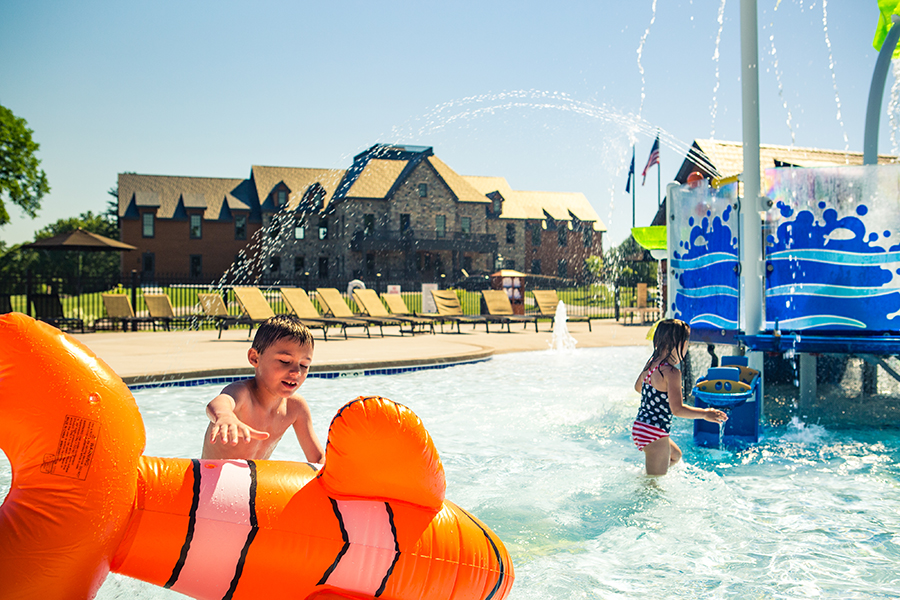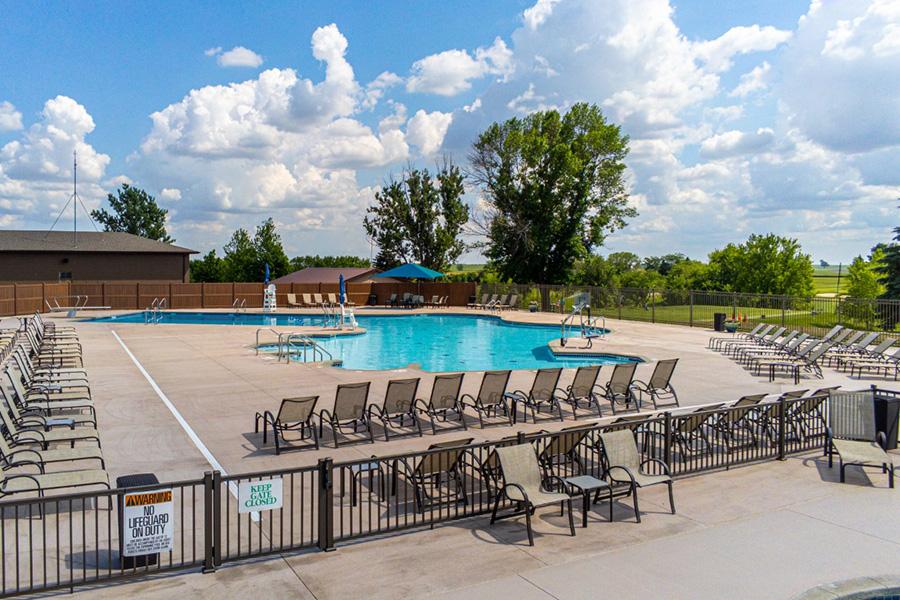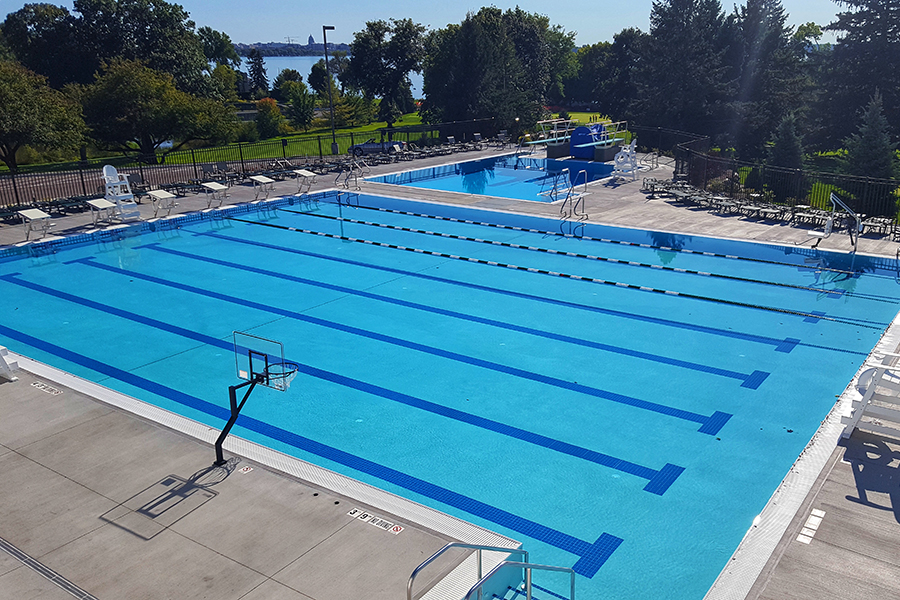The key to increasing country club membership? Your pool.
ramaker insights
The key to increasing country club membership? Your pool.
To appeal to potential members, country clubs used to focus on two words: Golf course. But in the past few years, a new two-word phrase has taken over.
Family fun.
To be clear, a great golf course with well-maintained grounds and pristine views still matters. However, leaders at country clubs across the US are looking for ways to appeal to millennials—and their young families.
For these clubs, more amenities mean more reasons to invest in membership.
The golf course is for golfers. What will the rest of the family do? Looking to get ahead of the curve, modern clubs are focusing on new improvements, like water-park-grade pool amenities and refreshed food and beverage options.
In this post, we explore why country clubs are directing capital investments to their aquatic facilities. We dive into the potential financial benefits of country club pool upgrades and outline essential design considerations for these swimming pools.

Splashing in a new revenue stream
An old wine captures the imagination of enthusiasts. The same can’t always be said of an old pool.
Country club pools built in the 1970s, 1980s, and 1990s don’t attract members like new aquatic facilities with large pools, splash pads, and separate toddler pools with zero-grade beach entries.
As country clubs consider major capital investments, pools rank alongside modern dining facilities, upgraded fitness centers, and luxurious spas as the most compelling improvements clubs can make. Why? Stunning swimming pools and trendy poolside amenities can drive new membership, increase food and beverage sales, and offer new value for existing members.
At the end of the day, many clubs and resorts decide that replacing old pools makes more financial sense than continuing to invest in upkeep for older pools. Any pool comes with costs. And today’s club owners are finding there’s a big difference between paying to maintain an unimpressive pool and leveraging a great pool area to increase membership.
Take Thunder Hills Country Club in Peosta, Iowa. When the club’s operations team decided to update their facilities in 2021, the pool area took center stage. The club replaced their old pool with a larger, family-friendly pool and extended the pool deck to provide more space for lounging.
Increasing pool area capacity matters. So does adding unique poolside amenities. Thunder Hills Country Club also expanded their bathhouse and indoor dining areas to accommodate more traffic and provide a resort-style experience for members. The club’s bar and dining cabana now serve members year-round. The club even uses that space to host a virtual golf simulator.
Whether guests are splashing in the pool, soaking up the sun on the pool deck, or enjoying drinks in the cabana, Thunder Hills Country Club now offers a complete member experience.


Design considerations for country club swimming pools
Creating a family-friendly aquatic facility comes down to three things: designing with all ages in mind, increasing pool capacity, and adding luxury amenities to improve member experience.
Forget one-size-fits-all pool designs
Wading pools with zero-grade beach entries. Splash pads with interactive spray features. Winding water slides. Some of today’s country club aquatic facilities look like they belong at all-inclusive resorts.
To attract more guests, clubs are moving away from one-size-fits-all pool designs. Water-based fun knows no age. That’s why many clubs are adding multiple spaces that cater to specific age groups. Investing in multiple pools means that adults can enjoy the solitary pleasure of swimming laps while children splash around in a safe and fun wading pool.
“Designing a facility to include multiple basins that serve different purposes can help the country club balance staffing requirements and keep operational costs in check,” said Eric Kaul, Aquatics, Civil, and Surveying Service Group Leader at Ramaker. “If a lap swim pool for adults meets certain layout requirements, it can be opened to members at different hours of the day and potentially with fewer lifeguards than a lap swim area connected to a children’s wading pool.”
For instance, when leadership at Nakoma Golf Club in Madison, Wisconsin, decided to upgrade the club’s pool area, they wanted to improve the recreational value of the facility and provide a fun and safe poolside experience for swimmers of all ages. The result? Nakoma Golf Club replaced the old pool with three new pools: an eight-lane competition pool, a diving well, and a wading pool with a zero-depth entry and interactive play features for young swimmers. The club also updated the locker rooms to enhance guest experience. These improvements serve not only the club’s swimming and diving team but also members of all age groups.
Higher capacity, more space for poolside programming
More pool space means clubs can accommodate more members and offer more programming in the pool area. By expanding pool decks and investing in poolside amenities, country clubs can also get creative with summer events (and in doing so, create more opportunities to generate revenue). From cookouts to night swims, clubs can find new ways to add value for members—by making their new pool area the place to be.
Take Maple Bluff Country Club in Madison, Wisconsin. When the club invested $5 million to replace its old pool, they upgraded its capacity. Leadership also chose a design that would allow the club to host the marquee summer swimming event: the All-City Swim and Dive meet—and the nearly 3,000 spectators at that meet.
Of course, pool area improvements don’t happen overnight. Many require years of consideration and strategic planning.
“When clubs consider multi-million dollar investments on pool area improvements, they want to make sure they do it right. Now, what does right look like? Many clubs start with a pool evaluation,” said Ramaker Aquatics, Civil, and Surveying Market Leader Daryl Matzke.
“Aquatic designers and engineers can recommend ways to extend the life of older pools while the clubs begin collecting member input and fundraising for a new facility.”

Create a luxurious experience with resort-grade amenities
Country clubs provide members an escape that’s close to home. They’re places to socialize with friends. Places to network with colleagues on the golf course. And places to unwind after a long week.
The challenge today’s clubs face? Providing more ways to escape the everyday. Pools are only one part of a day at the club. To attract new members, clubs have to provide a complete experience. If the golf course is the main, well, course, what delicious hors d’oeuvres can your club offer?
In many ways, resorts can serve a useful model for how to enhance country club amenities. Inventive pool concepts, paired with stylish cabanas and creative outdoor dining options, are a good start. What about luxury spas? Fitness centers? Which amenities will round out your club’s guest experience and allow you to serve your membership in more ways? Forward-thinking clubs are asking these questions now to drive membership in the near future.
Aquatic design and engineering for country club pools
Ramaker’s aquatic design and engineering team partners with architects, general contractors, and country clubs to create unique pools and water features that add value for club members.
Evaluating your pool’s future? Start a conversation with Ramaker today.



